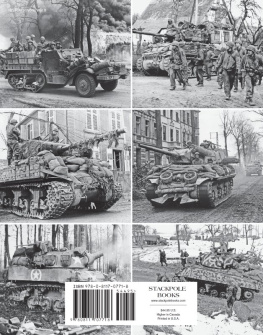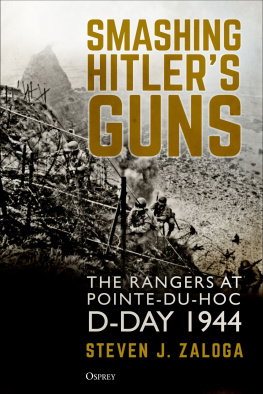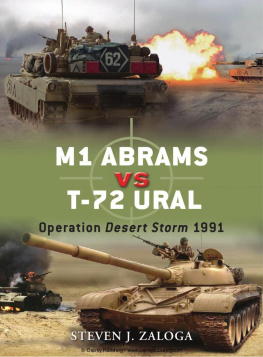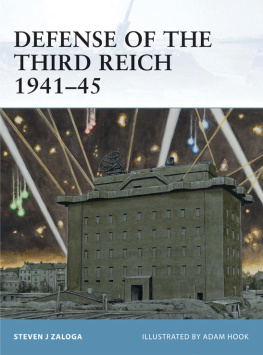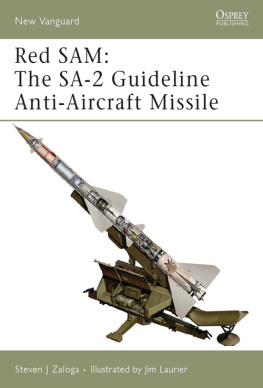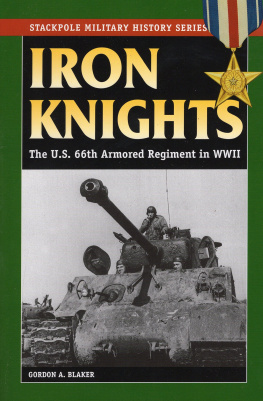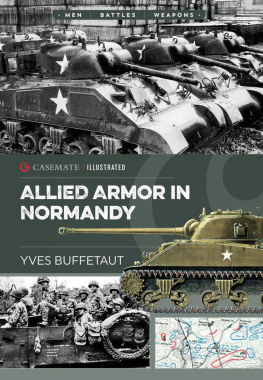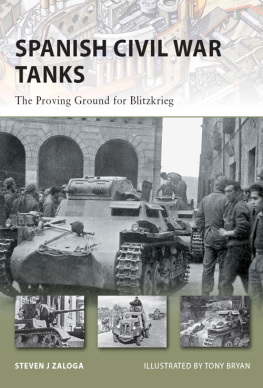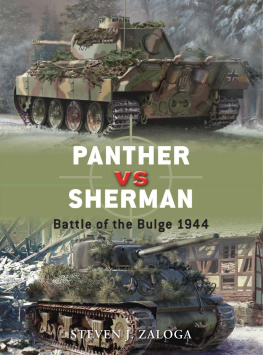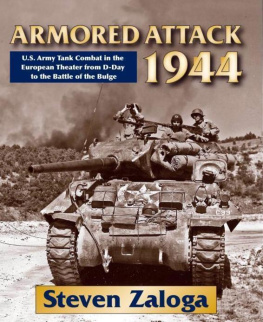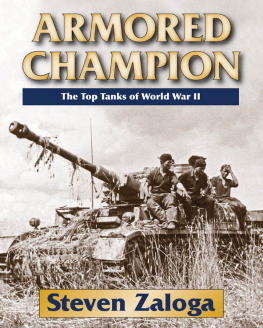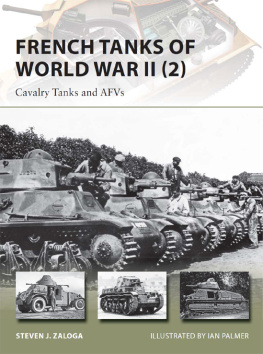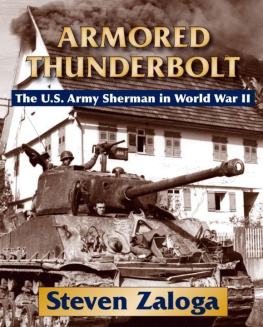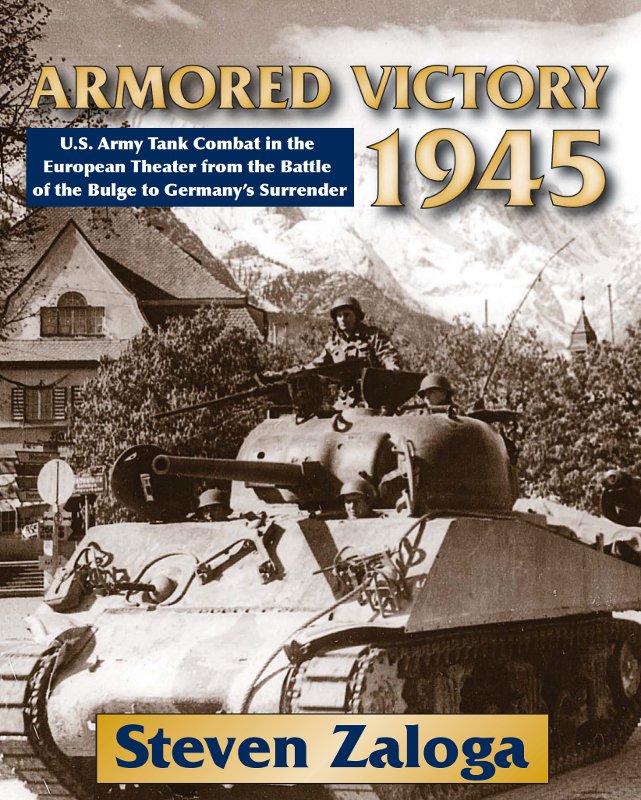
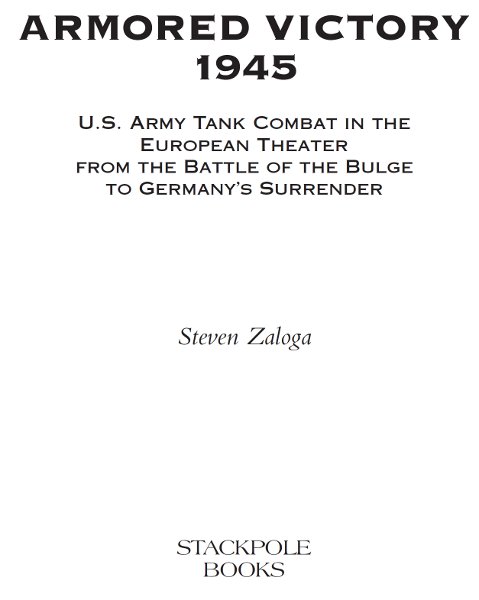
Copyright 2012 by Steven Zaloga
Published by
STACKPOLE BOOKS
5067 Ritter Road
Mechanicsburg, PA 17055
www.stackpolebooks.com
All rights reserved, including the right to reproduce this book or portions thereof in any form or by any means, electronic or mechanical, including photocopying, recording, or by any information storage and retrieval system, without permission in writing from the publisher. All inquiries should be addressed to Stackpole Books.
10 9 8 7 6 5 4 3 2 1
Library of Congress Cataloging-in-Publication Data
Zaloga, Steve.
Armored victory 1945 : U.S. Army tank combat in the European theater from the Battle of the Bulge to Germanys surrender / Steven Zaloga.
p. cm.
Includes .
ISBN 978-0-8117-0771-8
1. World War, 19391945Tank warfare. 2. World War, 19391945Tank warfarePictorial works. 3. World War, 19391945CampaignsWestern Front. 4. World War, 19391945CampaignsWestern FrontPictorial works. 5. United States. ArmyArmored troopsHistoryWorld War, 19391945. 6. United States. ArmyArmored troopsHistoryWorld War, 19391945Pictorial works. I. Title.
D793.Z343 2012
940.54'21dc23
2011039336
eBook ISBN: 9780811745598
Contents
Introduction
T his book is the Second of a two-volume set covering U.S. Army armored units in combat in the European theater of operations from D-Day on 6 June 1944 through the end of the conflict in May 1945. The two volumes are split chronologically between 1944 and 1945. The aim of this book is to provide an in-depth visual record of armored combat through the eyes of the U.S. Army combat cameramen. Although the majority of the photos cover American armored vehicles, an extensive selection of photos of German vehicles is also included to help provide a more complete image of the fighting. However, the armored operations of the Field Marshal Bernard Montgomerys neighboring British-Canadian 21st Army Group are outside the scope of this book. Nor does this book cover U.S. armored units the Mediterranean theater of operations in Italy.
These photos come primarily from the main collection of World War II U.S. Army Signal Corps photos, which totals about a quarter of a million prints. This collection was initially housed at the Pentagon through the early 1970s when I first began to do my photo research. It was later transferred to the Defense Audio-Visual Agency facility at Bolling Air Force Base in Virginia and finally to the National Archives and Records Administration (NARA II) at College Park, Maryland, where it currently resides. The vast majority of the photos in this book come from this collection. A subsidiary Signal Corps collection resides at the U.S. Army Military History Institute at Carlisle Barracks, Pennsylvania, which also recently absorbed the rump Signal Corps collection held by the U.S. Army Center for Military History. In most cases, these photos duplicate the National Archives holdings. Although the Signal Corps collections contain most of the surviving World War II photos, they do not contain all of them.
Many photos shot by Signal Corps combat cameramen were released through other venues during the war, such as the Office of War Information. A large portion of these photos are available at NARA II. In addition, other photos were never accepted into the main Signal Corps collection but were retained by separate organizations. For example, the library at the U.S. Military Academy at West Point has the Bradley Collection, which is a separate and distinct collection of Signal Corps photos, some of which are not located in the main Signal Corps holdings at the National Archives or Military History Institute. Finally, there are a variety of other smaller holdings at various archives, including the Patton Museum Library, formerly at Fort Knox, Kentucky, and the Ordnance Museum, formerly at Aberdeen Proving Ground. Besides the U.S. Army collections, there are also some useful photos of U.S. Army operations in the U.S. Navy and U.S. Air Force collections. It has taken me nearly forty years of research to collect the photos in this book.
The Signal Corps photos sometimes, but not always, include basic information on the date, location, and units depicted in the photo. This data is incompleteand sometimes quite erroneous. Unit information is often lacking, and the spelling of the European locations is notoriously erratic. For example, a series of photos identified as having been taken in Ploy, France, were actually taken in Parroy, France. Over the years, European military historians have done considerable work in more precisely identifying the actual location of these photos, and I have made every effort to try to correct this information when possible. However, a certain measure of uncertainty still remains about some of the details of many photos.
I have attempted to select the photos in this books to satisfy a variety of potential readers. I have included photos of interest to military historians covering significant battles. At the same time, I have attempted to include photos providing technical details that will appeal to military hobbyists such as military modelers, war-gamers, and historical reenactors. It is very difficult to achieve an ideal balance because of the very uneven coverage in wartime photos. After decades of research in the Signal Corps photos, I quickly discovered that combat photos taken during or shortly after major battlessuch as Omaha Beach on D-Day or the first few days of fighting in the Ardennes in December 1945are actually quite rare. Other events attracted a disproportionate amount of attention, so photo coverage of the liberation of Paris on 25 August 1944 was quite thorough. I have included some photos of poor technical quality as I believe these will be of interest to readers. Likewise, in the captions, I have tried to reach a balance between historical and technical information.
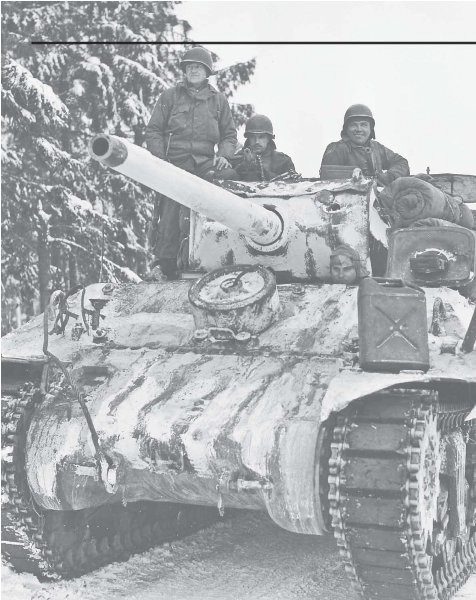
Chapter 1
Crushing the Bulge
T he German offensive in the Ardennes was stopped in the days after Christmas 1944. However, the fighting was far from over. During the first week of January 1945, Hitler attempted to secure some gains from the limited success in the Bastogne area and shifted the panzer forces of the Sixth Panzer Army from the failed northern sector to the Bastogne area. By this time, Lt. Gen. Courtney Hodgess U.S. First Army and Lt. Gen. George Pattons U.S. Third Army had moved up substantial reserves of armor, and the last-gasp German attacks were crushed. Hitler finally recognized the obvious, pulled back the Sixth Panzer Army, and sent it off to Hungary, where it became embroiled in an equally doomed offensive against the Red Army.
While the Germans realized that the Ardennes offensive had failed, they did not give up. January saw a brutal series of battles as the U.S. Army attempted to regain the territory lost in December. The enemy was as much the weather as the Germans, with particularly cold winter weather and deep snow hampering operations. On 16 January 1945, Pattons Third Army linked up with Hodgess First Army near Houffalize, and by 28 January, the last territory lost in the Battle of the Bulge was regained.
Losses in the Ardennes were heavy on both sides. American casualties totaled 75,482, of which 8,407 were killed, 46,170 wounded, and 20,905 missing through the end of January. The British 30 Corps lost 1,408, including 200 killed, 239 wounded, and 969 missing. Estimates of German losses vary from 67,200 to 98,025 casualties, depending on the parameters. The lower figure included 11,171 killed, 34,439 wounded, and 23,150 missing. The Wehrmacht lost about 610 tanks and assault guns in the Ardennes (about 45 percent of its original strength) compared to about 730 American tanks and tank destroyers (less than 20 percent of the force). The head of the German High Command West (OB West) staff later wrote that the Ardennes had broken the backbone of Wehrmacht on the Western Front. The diarist of the Wehrmacht High Command, P. E. Schramm, later noted, The abortive [Ardennes] offensive had made clear not only the aerial but the armored superiority of the enemy.

